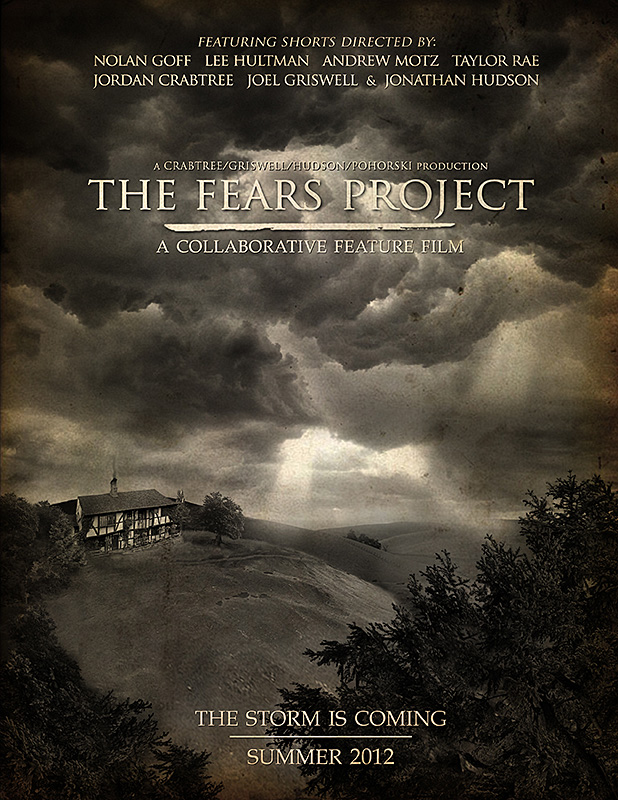When senior Jon Hudson, alumnus Joel Griswell and junior Jordan Crabtree watched David Lynch’s film, “Eraserhead,” in 2009, they were inspired to delve into the stories behind people’s fears.
This idea developed into “The Fears Project,” a film which would give several directors the chance to work together to tell a cohesive story, each of them diving into the depths of his or her deepest fears.
Directed in segments by different students
This work in progress will be a feature-length film composed of 10-minute segments directed by various students.
Each segment will allow its director to examine his or her own phobia, to expose intimate insight into their feelings and thoughts.
The seven to eight directors will each write and direct their own segment, in which they depict their fears through a nightmare.
Film segments combine to create thriller
As they portray their phobia in this dreamlike, surreal manner, they will produce a sort of psychological thriller.
“We have things as complex as the fear of passing along bad traits to your children, not knowing the darker side of yourself, but not being able to escape it either, or living all your life and not fulfilling your dreams –– which is something a lot of people would fear, I’m sure,” creator and producer Hudson said. “These directors are dealing with these fears so personally, but still they are very universal, so when an audience member watches the film, we want them to connect and say, ‘I deal with that too.’”
No conclusions to the film
Each segment is very dark, and since the phobias are portrayed as nightmares, the pieces have no resolution.
This caused a few directors, who were initially on board, to drop out because they were unsettled by not being able to see a conclusion in their segment.
One segment explores doubting God’s existence
However, this has not slowed the film’s progress. Just last Christmas break, sophomore director Andy Motz completed the first “Fears Project” shoot.
Motz’s segment, called “The Unraveling,” is based on the possibility of living life believing a lie.
The premise is that the main character has been writing letters to his father, but after a while, letters stop coming in return. The main character sets out to discover what happened, and has to figure out whether or not his father even existed in the first place.
“Andy’s segment plays back to the idea of doubting the existence of God, that fear of coming to a point where you question, ‘I’ve spent so much of my life believing something and investing in that belief –– what if it’s not real?’” Hudson said.
All segments will be pieced together amid a loose narrative, with a transitional world uniting all the shorter stories.
Since each director’s contribution is a dream, a pocket in the subconscious, it is necessary to tie the audience back to the real world.
The producers realized that having seven nightmares back-to-back could be overwhelming, so they plan to insert transitions in order to give the viewers time to breathe and reflect on what they have just watched.
Biola’s first feature film
As the first feature film to come out of Biola, the entire film is set to be completed by summer 2012.
There have been films that have come close to being feature-length, like “Blank Slate” in 2005, which was about 45 minutes.
Others have been attempted over the years, but they have never been completed. According to the producers, “The Fears Project” is manageable due to the seven or eight different directors working together.
Publicizing their work
With about a year left of work, those heading “The Fears Project” strive to publicize this film well. Utilizing social media, senior producer Natalie Pohorski manages their Twitter, Facebook and YouTube pages.
“As far as student films go, it’s a good time because of where social media is going,” Pohorski said. “Word of mouth is free, and you can get so many more people involved just by using social media. I know a lot of random people who found out about ‘The Fears Project’ on Twitter.”
Right now, the film is being publicized to the general public, but there are more exclusive advertising methods in the making.
“We’re putting together a secret access feed where we’ll have some sort of blog with information about different segments and blogs from the directors,” Hudson said. “We’ll have outtakes, interviews and all that. To access this exclusive feed, you’ll have to do something extra so it will be like a mode of fundraising. If you advertise for us, you’ll get access.”







